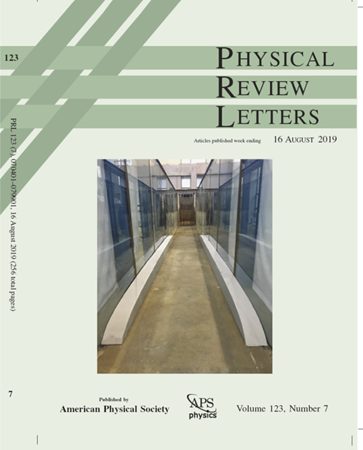Cooperativity of Confined Nematic Microswimmers: From One to Many
IF 8.1
1区 物理与天体物理
Q1 PHYSICS, MULTIDISCIPLINARY
引用次数: 0
Abstract
Controlling the behavior of microswimmers is a major challenge to extract work for novel active matter applications. Geometric confinement is often used for controlling soft matter systems. However, in comparison to the case of Newtonian fluids, the effects of solid interfaces on microswimmers moving through an anisotropic fluid are far less understood. By means of nematic multiparticle collision dynamics simulations and analytical modeling, we investigate the dynamical behavior of swimmers immersed in a nematic liquid crystal and confined by solid walls. For isolated squirmers, we find a rich phase diagram including oscillatory dynamics for weak pushers, depending on the strength of their propulsion and degree of confinement. Our theoretical model shows that, unlike in the isotropic case, in a nematic fluid, force dipole, source dipole, and source quadrupole singularities all are required for the onset of oscillations. Increasing the number of squirmers shows the emergence of cooperativity in pusher-type squirmers, while pullers’ flow fields hinder each other’s motion. The interplay of nematodynamic torque, wall-induced elastic repulsion, and active flows thus offers the opportunity for both control and transport in active nematic systems.求助全文
约1分钟内获得全文
求助全文
来源期刊

Physical review letters
物理-物理:综合
CiteScore
16.50
自引率
7.00%
发文量
2673
审稿时长
2.2 months
期刊介绍:
Physical review letters(PRL)covers the full range of applied, fundamental, and interdisciplinary physics research topics:
General physics, including statistical and quantum mechanics and quantum information
Gravitation, astrophysics, and cosmology
Elementary particles and fields
Nuclear physics
Atomic, molecular, and optical physics
Nonlinear dynamics, fluid dynamics, and classical optics
Plasma and beam physics
Condensed matter and materials physics
Polymers, soft matter, biological, climate and interdisciplinary physics, including networks
 求助内容:
求助内容: 应助结果提醒方式:
应助结果提醒方式:


